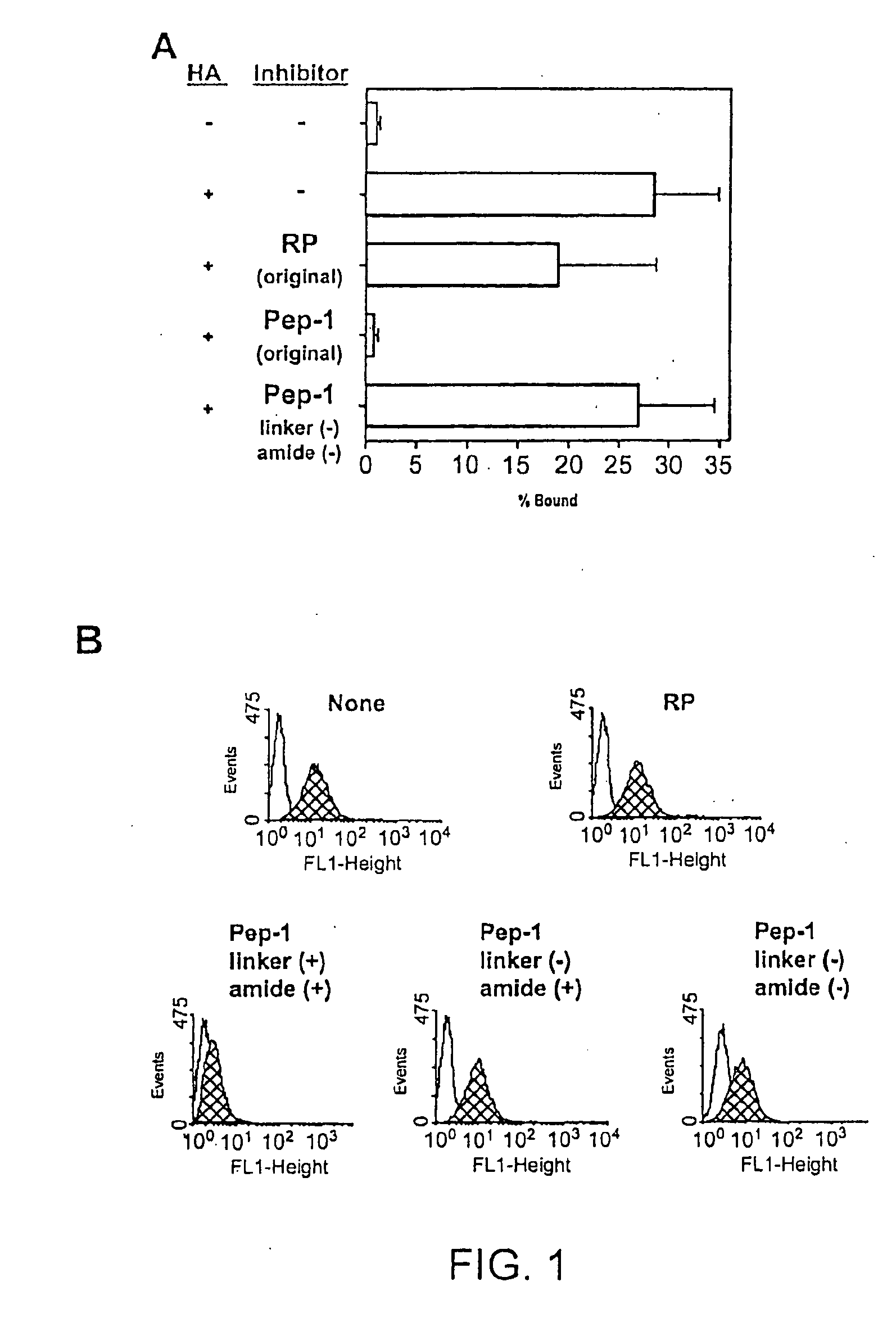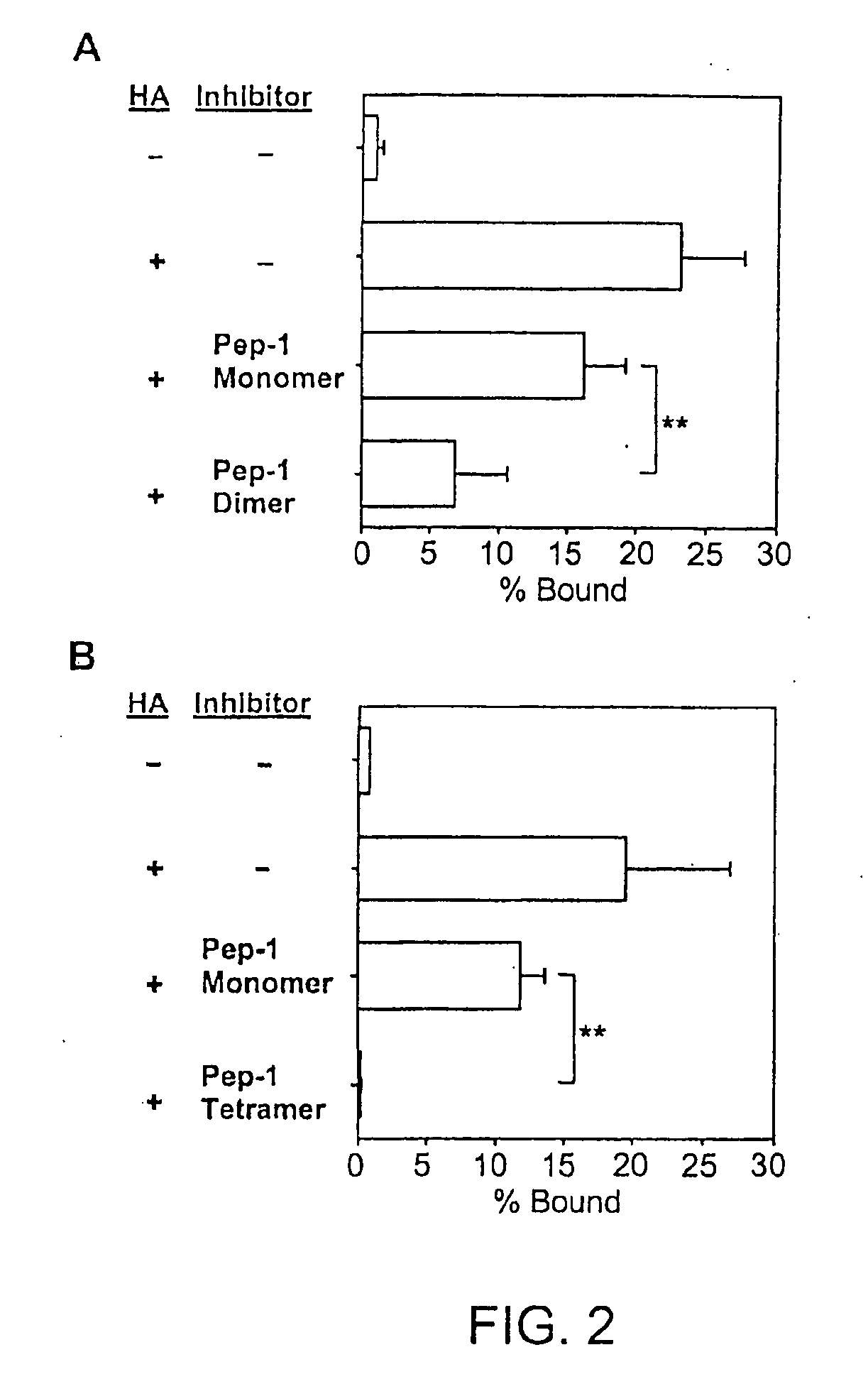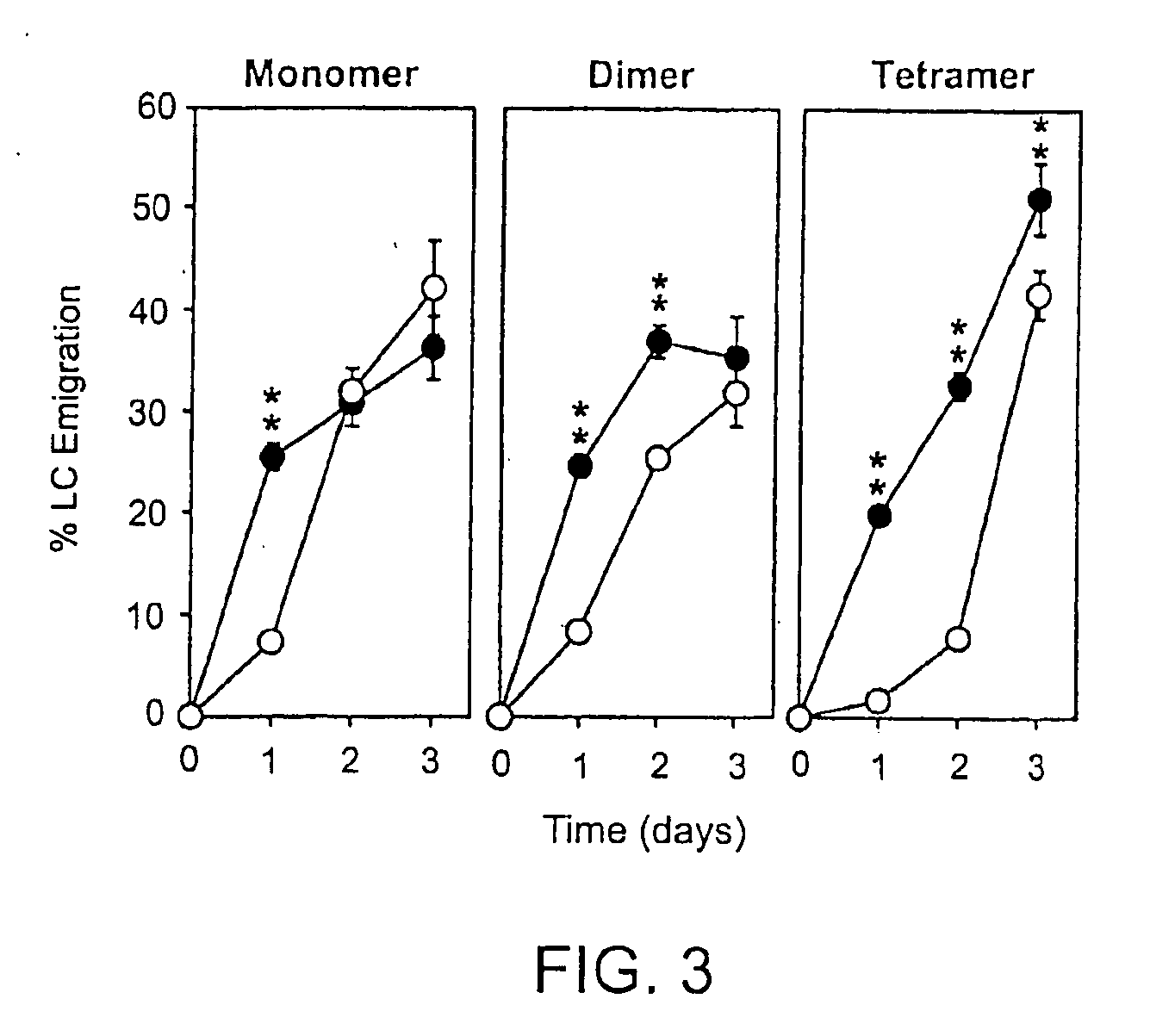Inhibitors of glycosaminoglycans
a glycosaminoglycan and inhibitor technology, applied in the field of cancer, immunology and inflammatory diseases, can solve the problems of difficult development of inhibitors or probes of glycosaminoglycans, isolated glycosaminoglycans, etc., to inhibit tumorigenesis and metastasis, and inhibit ha-dependent processes
- Summary
- Abstract
- Description
- Claims
- Application Information
AI Technical Summary
Benefits of technology
Problems solved by technology
Method used
Image
Examples
example 1
Chemical Modifications of Pep-1
[0159]Pep-1 was subject to chemical modifications to obtain a more high-throughput and cost-effective derivative. The present inventors discovered derivatives that had several desirable properties that significantly enhance their and clinical applicability as well. For example, the derivatives were highly water soluble, did not require additional solvents for dissolution, higher affinity for the glycosaminoglycan substrate (e.g., HA), and were more effective biologically.
[0160]Synthesis of the Pep-1 Dimer. The Pep-1 dimer was synthesized by adding two moles of Pep-1 per mole of succinic acid in 0.1 NHCl, in the presence of 10-fold molar excess of i-ethyl-3-(3-dimethylaminopropyl)carbodiimide relative to succinic acid and was subsequently purified by size-exclusion column chromatography.
[0161]Properties of the Pep-1 Dimer. The Pep-1 dimer was soluble in the absence of added solvents such as DMSO and exhibited significant biological activities to prevent...
example 2
Comparison of Pep-1 and Derivatives
[0165]Pep-1 and its dimeric and tetrameric derivatives were compared for their in vivo activities to prevent hapten-triggered LC emigration from the epidermis. Two local injections of the original monomeric Pep-1 before DNFB application inhibited LC emigration almost completely when tested at 24 hr after DNFB painting. However, LC began to migrate from Pep-1-injected skin sites at later time points (48 and 72 hrs after DNFB application) with the kinetics comparable to those observed in the control group receiving random peptide (RP) injections (FIG. 3). By marked contrast, the dimeric form at the same concentration in terms of the molarity of the Pep-1 sequence inhibited LC migration significantly at 24 and 48 hrs after DNFB application. Moreover, the tetrameric form prevented LC migration almost completely at 24 and 48 hr and significant (P<0.01) inhibition was still observed even at 72 hr.
[0166]In other studies that measured inhibition of HA-medi...
example 3
Role in Preventing Metastasis
[0167]Surface expression of particular CD44 isoforms has been observed in many cancers and CD44 inhibitors have been showed to inhibit cancer metastasis in many animal tumor models. Thus, the present inventors determined the potential of Pep-1, an inhibitor of HA function, to prevent tumor metastasis using a fully established model of experimentally induced lung metastasis of in vivo infused B16-F10 melanoma cells76.
[0168]In the model, melanoma cells and Pep-1 (or random peptide control or PBS alone) were injected together intravenously into syngeneic C57BL / 6 mice and lung metastasis was examined macroscopically and by following-up the survival of mice. As reported by other investigators, multiple macroscopic satellite regions were observed in the lung in 10 days after tumor inoculation. Simultaneous i.v. injection of Pep-1 (the original monomeric form) together with B16-F10 melanoma cells reduced the extent of lung metastasis significantly as compared t...
PUM
| Property | Measurement | Unit |
|---|---|---|
| delay time | aaaaa | aaaaa |
| delay time | aaaaa | aaaaa |
| delay time | aaaaa | aaaaa |
Abstract
Description
Claims
Application Information
 Login to View More
Login to View More - R&D
- Intellectual Property
- Life Sciences
- Materials
- Tech Scout
- Unparalleled Data Quality
- Higher Quality Content
- 60% Fewer Hallucinations
Browse by: Latest US Patents, China's latest patents, Technical Efficacy Thesaurus, Application Domain, Technology Topic, Popular Technical Reports.
© 2025 PatSnap. All rights reserved.Legal|Privacy policy|Modern Slavery Act Transparency Statement|Sitemap|About US| Contact US: help@patsnap.com



